Abstract
On the basis of return-visit patterns, a method is presented for determining which medical records should be kept in the active file and how long such records should be kept active for criteria of desired file size, desired probability of record use, desired percentage of successful file searches, and relative cost of storage in active and inactive files. The method is relevant to both physical and computerized medical record files and can incorporate any additional sets of variables that define patient groups with distinct return-visit patterns. Implementation of the system in the Lahey Clinic is described, and possibilities for further refinement of the method are discussed.
Full text
PDF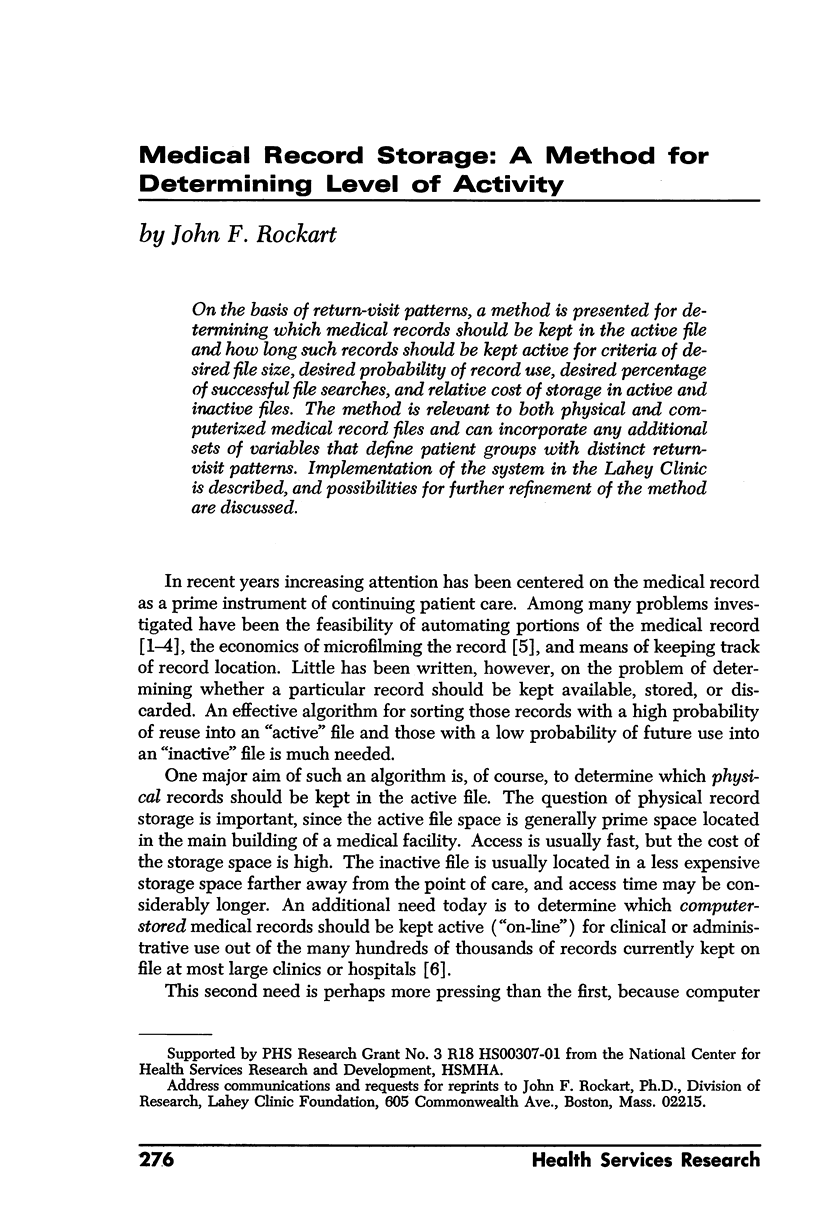
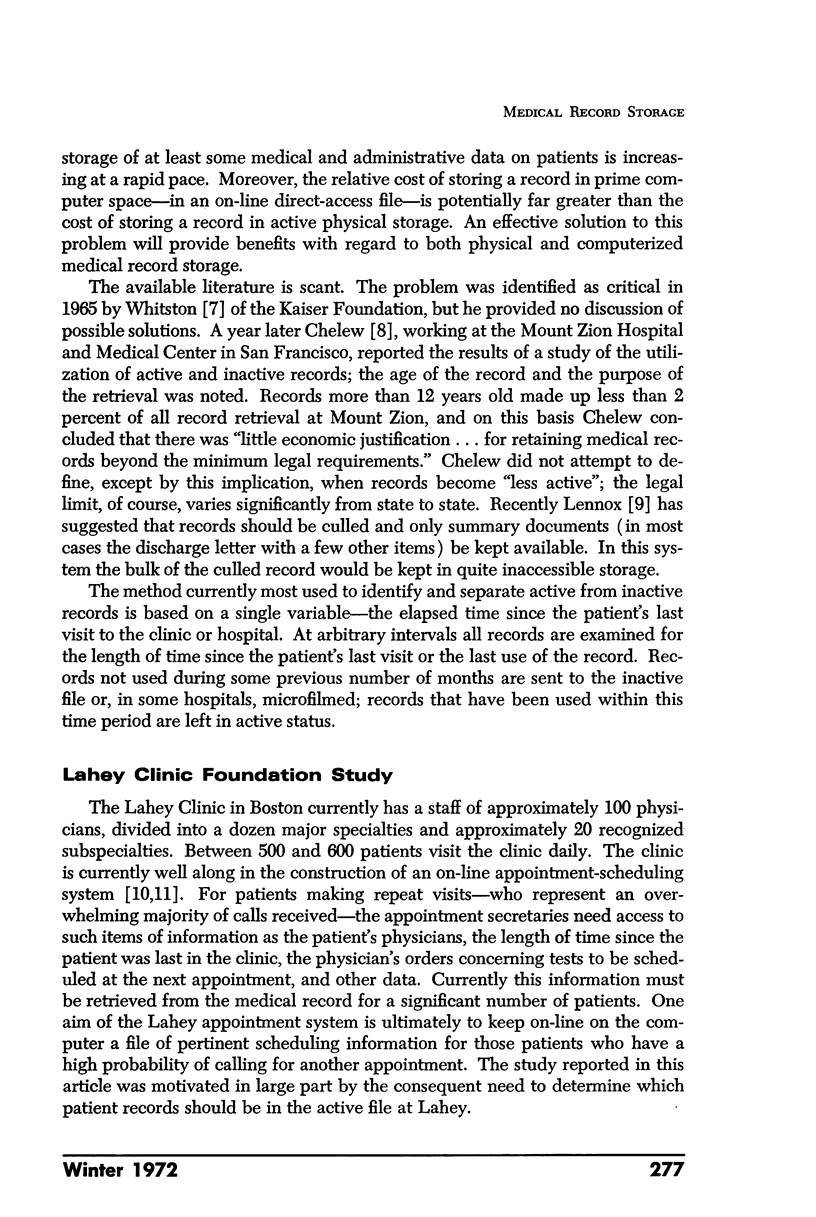
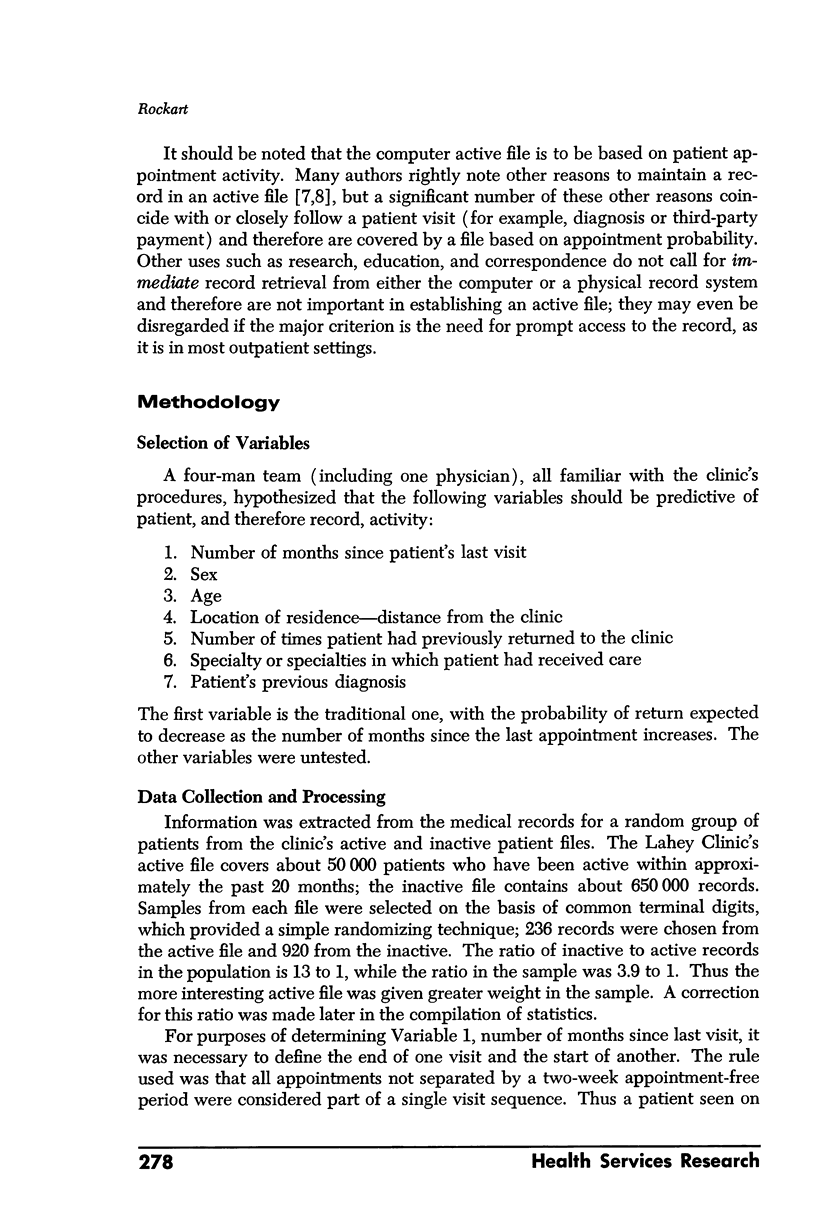
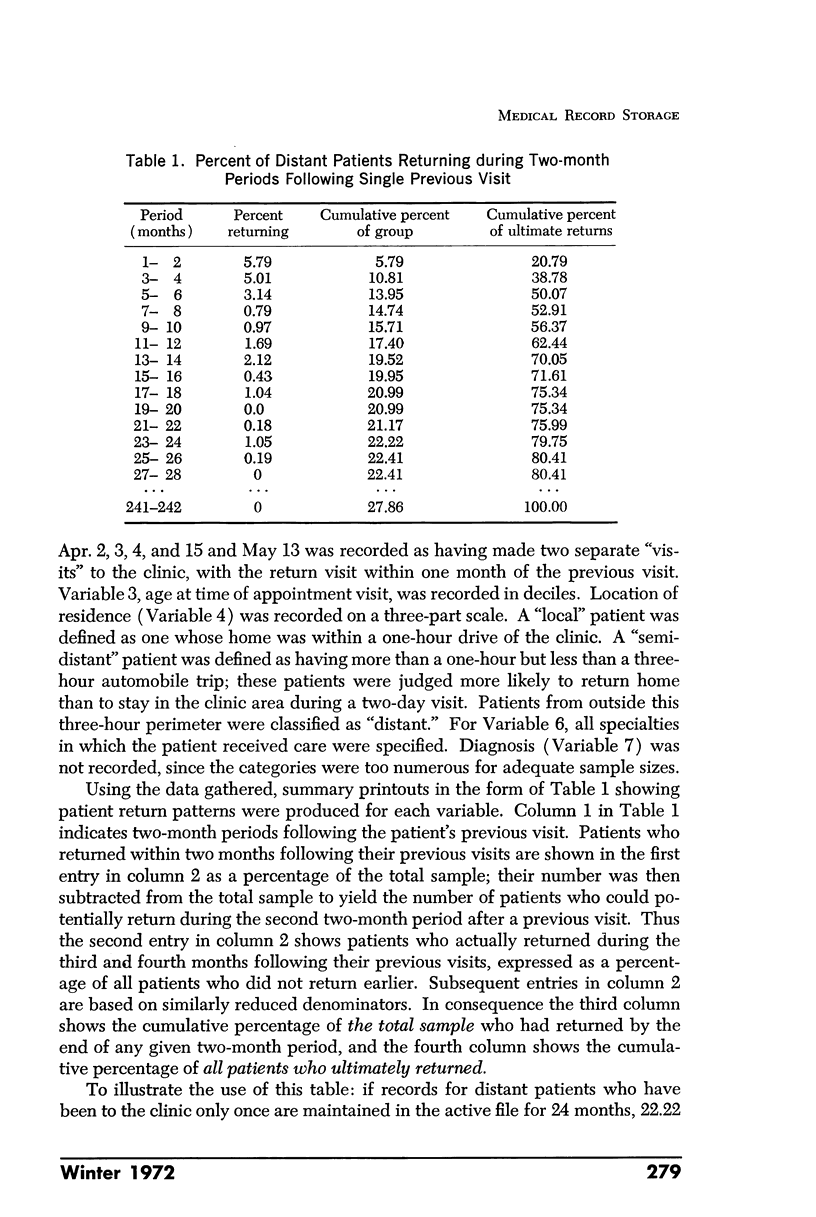
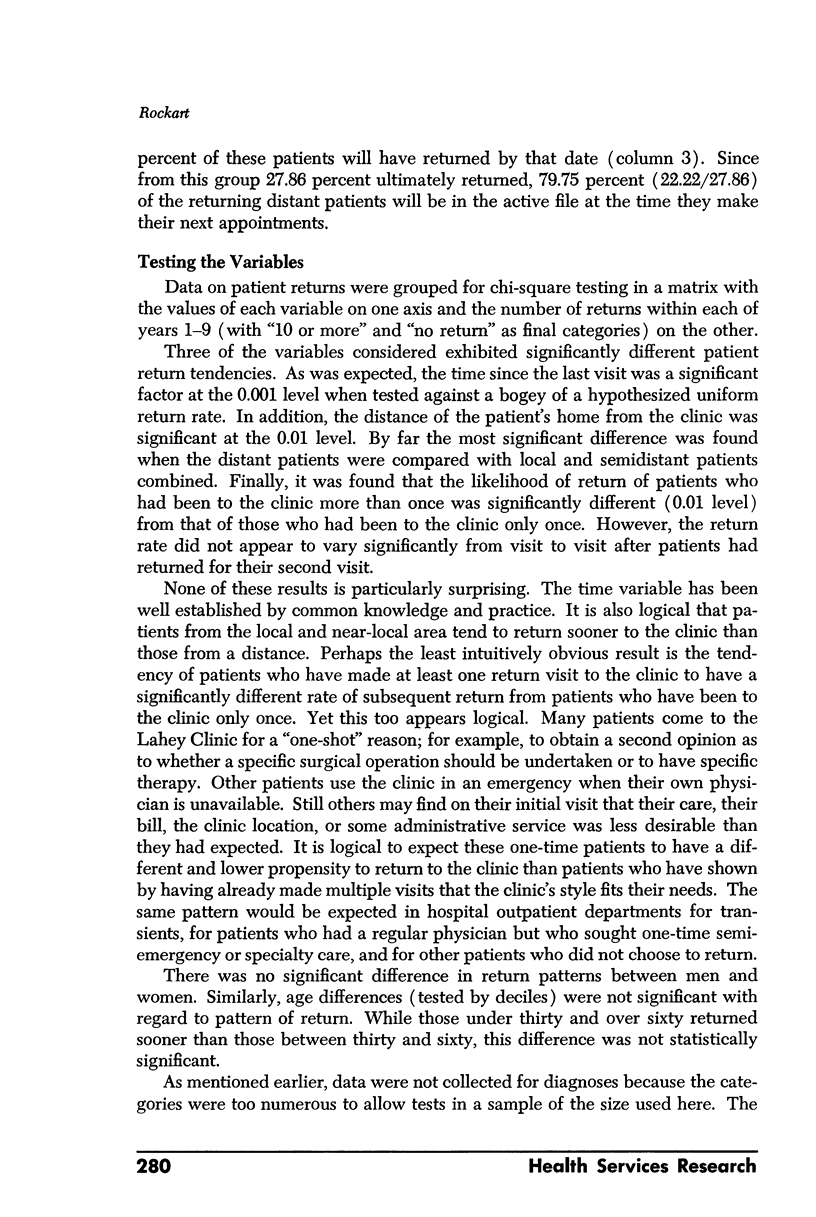
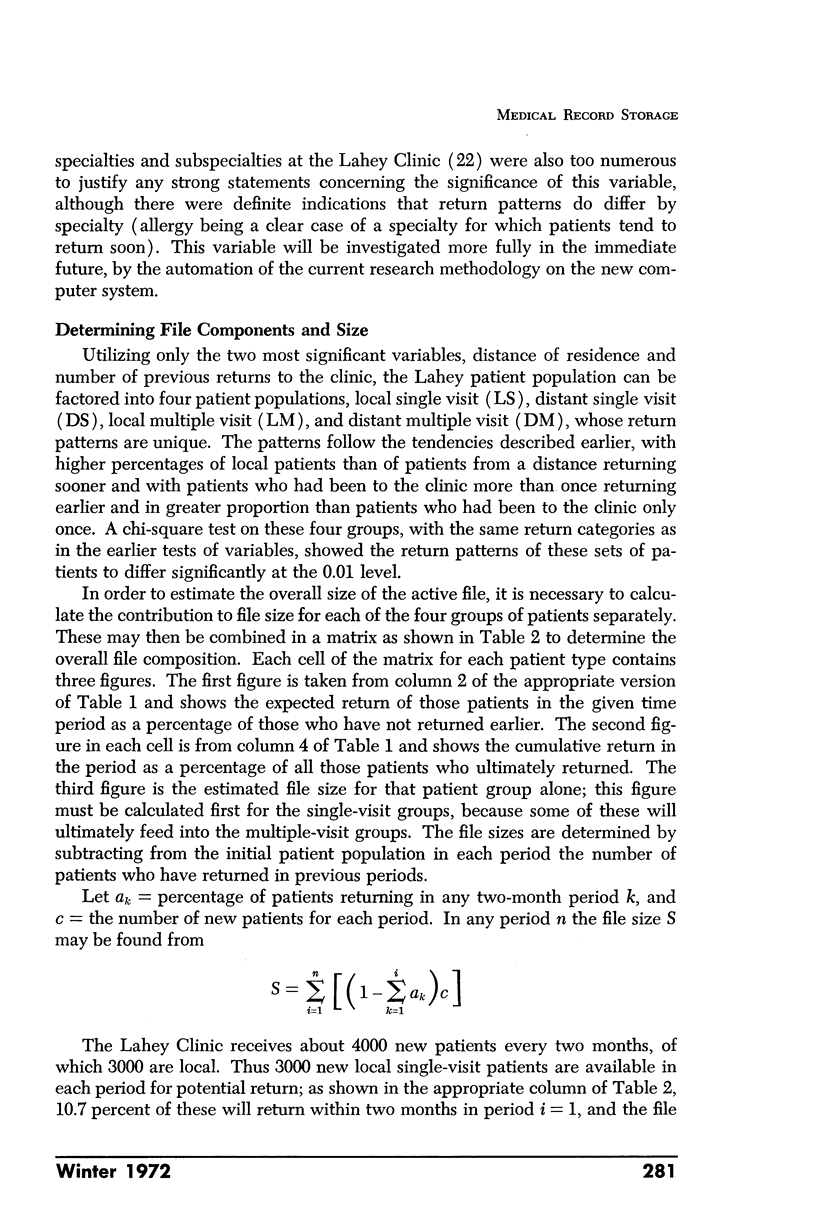
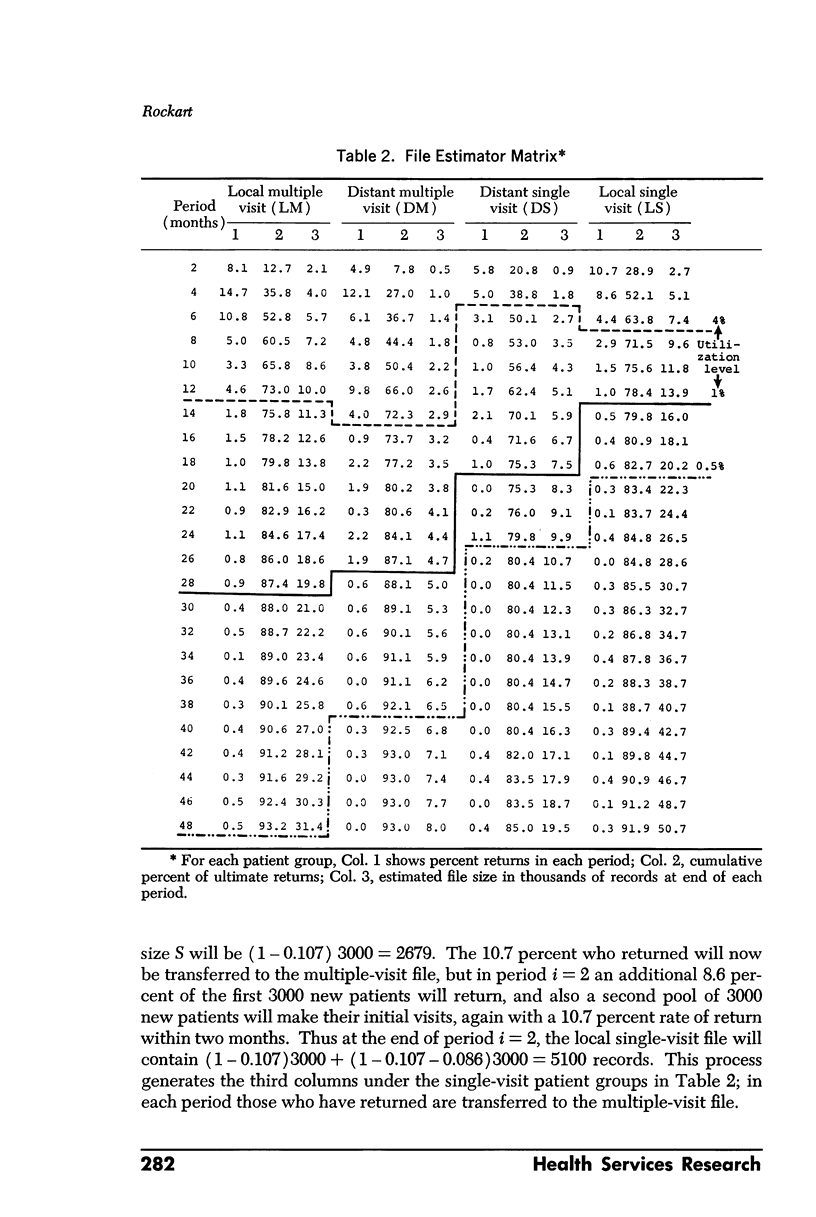
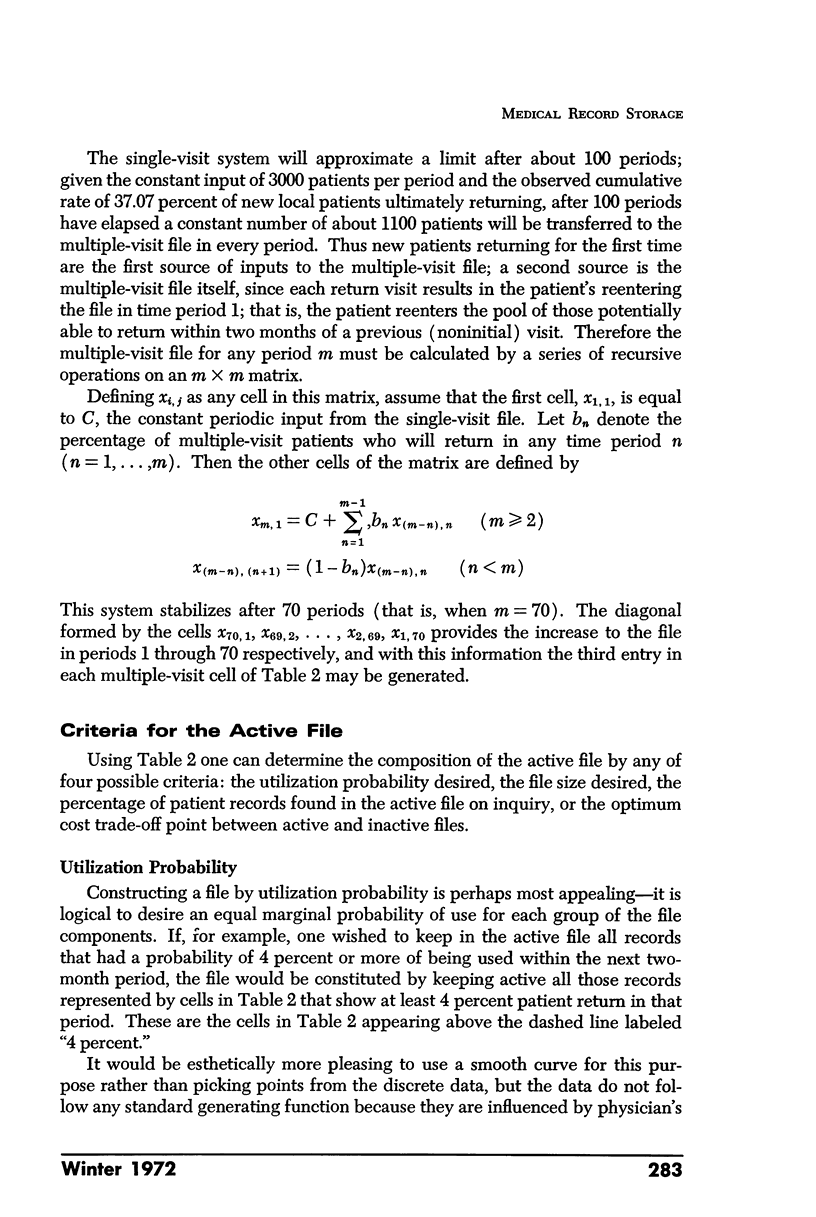
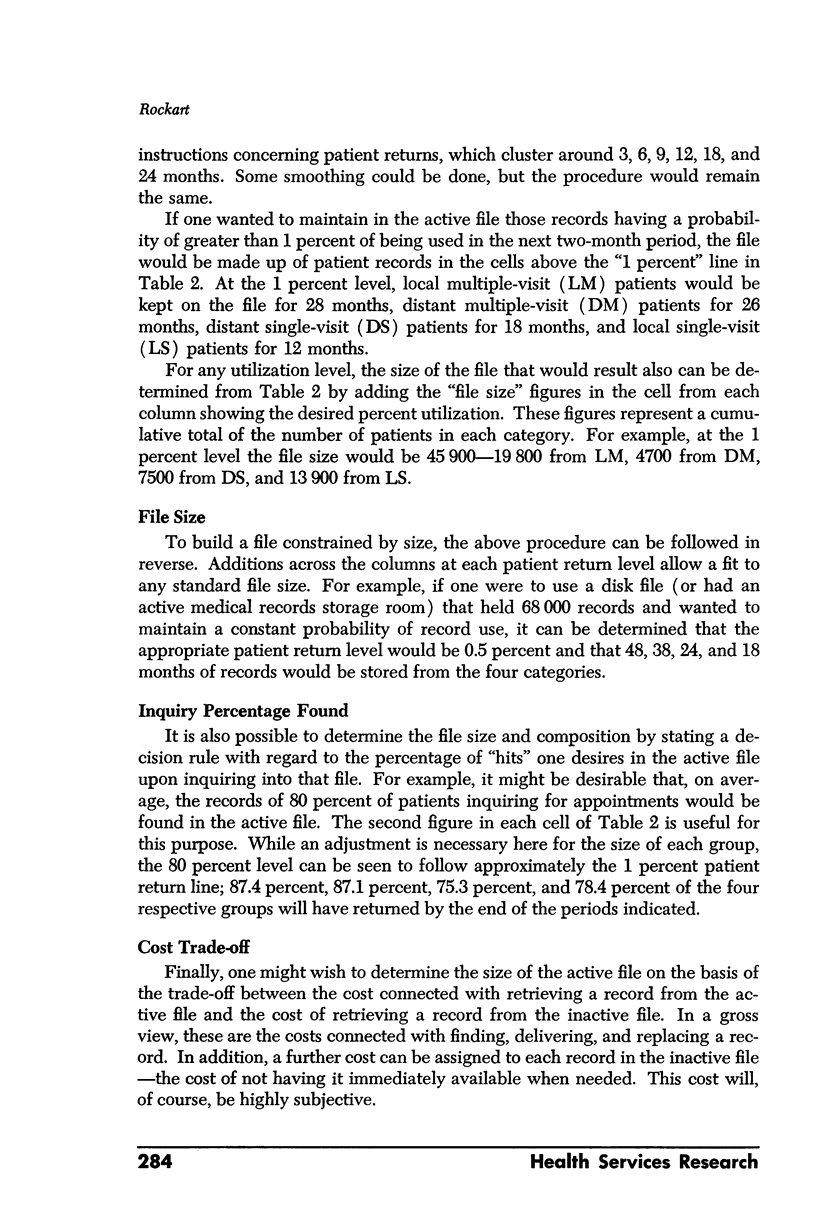
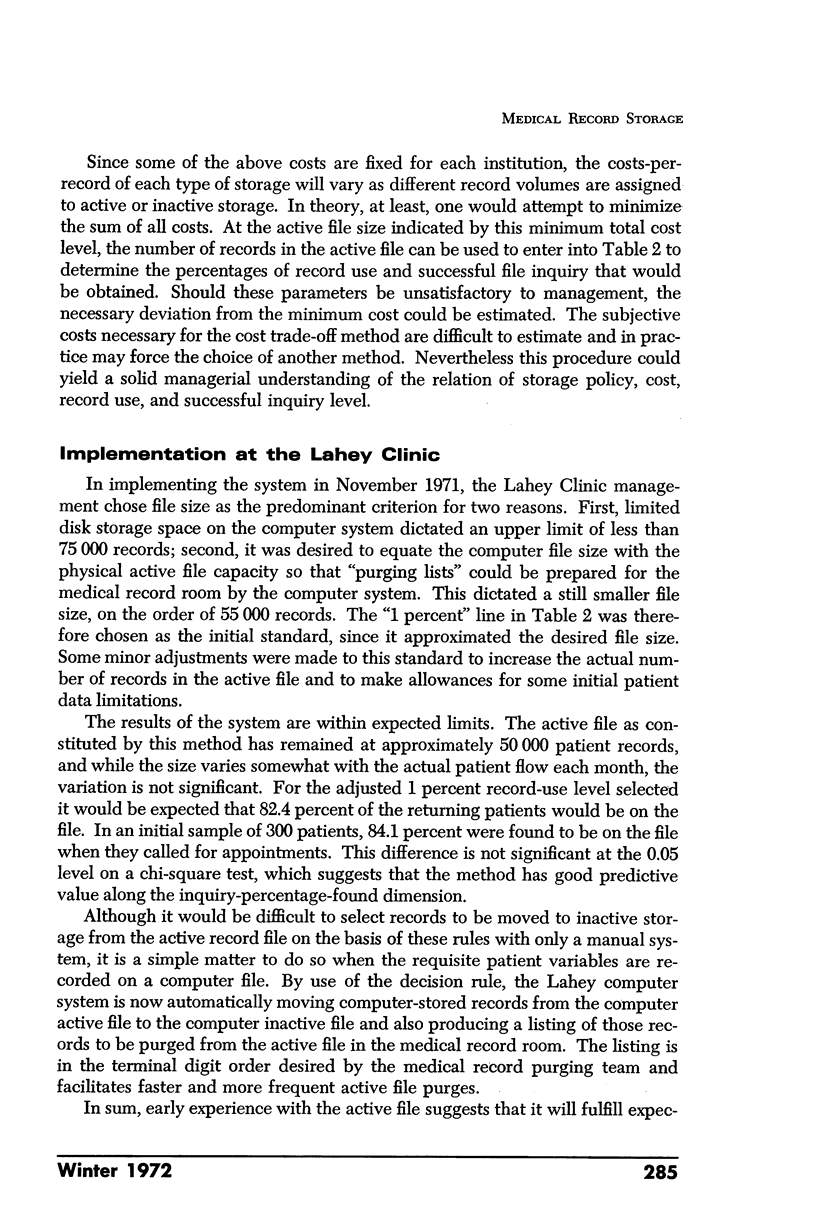
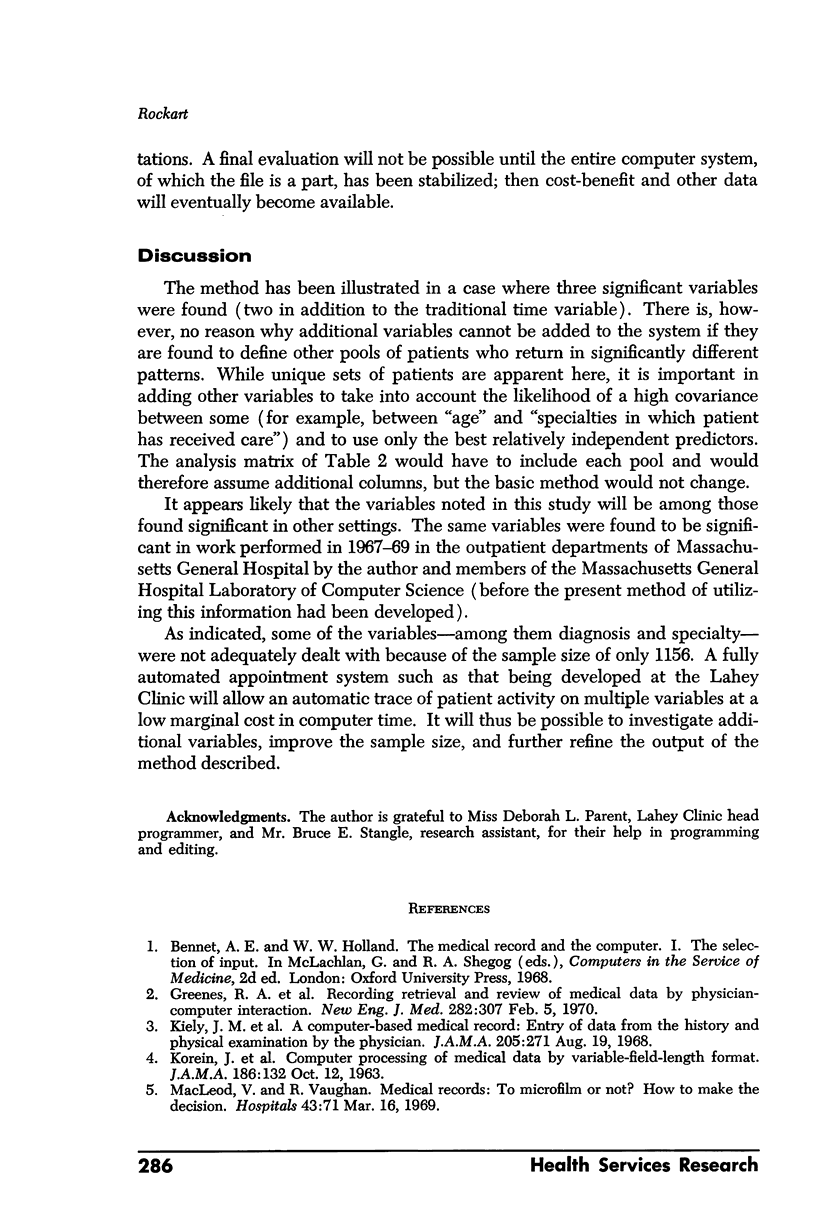
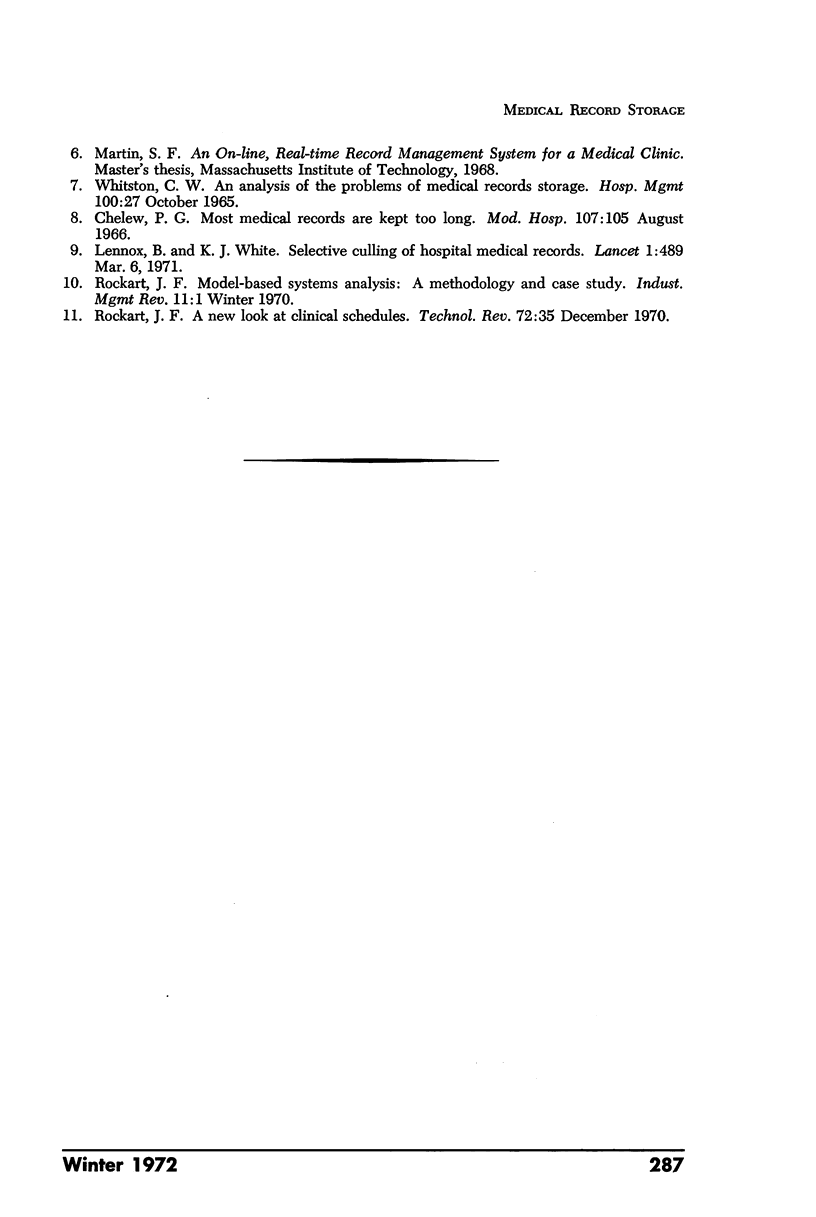
Selected References
These references are in PubMed. This may not be the complete list of references from this article.
- Chelew P. G. Most medical records are kept too long. Mod Hosp. 1966 Aug;107(2):105–107. [PubMed] [Google Scholar]
- Greenes R. A., Barnett G. O., Klein S. W., Robbins A., Prior R. E. Recording, retrieval and review of medical data by physician-computer interaction. N Engl J Med. 1970 Feb 5;282(6):307–315. doi: 10.1056/NEJM197002052820605. [DOI] [PubMed] [Google Scholar]
- KOREIN J., WOODBURY M. A., TICK L. J., CADY L. D., GOODGOLD A. L., RANDT C. T. COMPUTER PROCESSING OF MEDICAL DATA BY VARIABLE-FIELD-LENGTH FORMAT. JAMA. 1963 Oct 12;186:132–138. doi: 10.1001/jama.1963.63710020001015. [DOI] [PubMed] [Google Scholar]
- Lennox B., White K. J. Selective culling of hospital medical records. Lancet. 1971 Mar 6;1(7697):489–490. doi: 10.1016/s0140-6736(71)91102-0. [DOI] [PubMed] [Google Scholar]
- Whitston C. W. An analysis of the problems of medical records storage. Hosp Manage. 1965 Oct;100(4):27–36. [PubMed] [Google Scholar]


